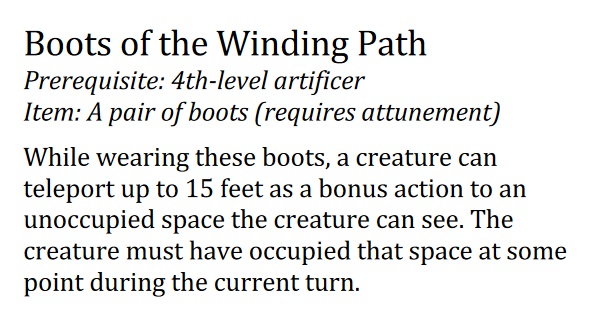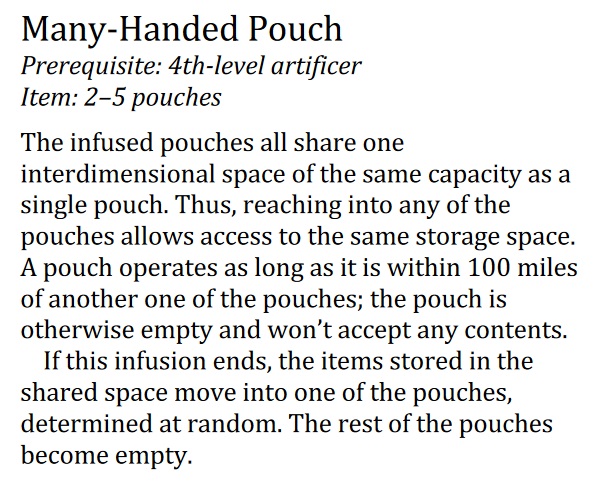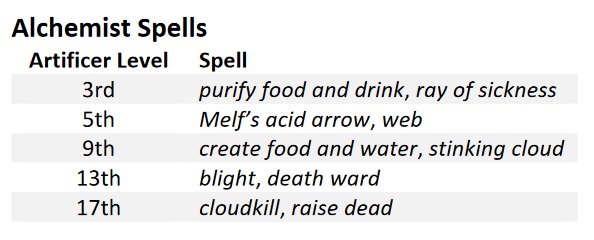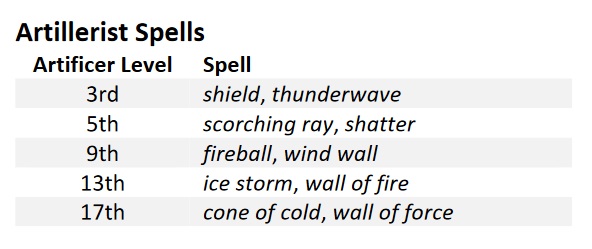D&D: Unearthed Arcana Showcases A Heavily Revised Artificer


Coming in at the tail end of February, the latest Unearthed Arcana brings us the Artificer–a brand new class for 5th Edition that’s changed quite a bit since the last time we saw it. Come see how inside.
The Artificer is one of the most-requested pieces of Unearthed Arcana. It represents the first new class added to 5th Edition since it was released in 2014–and even now it’s still not out. But it is drawing a lot closer, and this version is linked to Eberron, which makes the ongoing test of the Wayfinder’s Guide to Eberron a likely candidate for where the Artificer might come to rest in an official capacity. But there’s no official word on when it might be officially out, so we’re officially waiting–and unofficially diving in to the new version of the Artificer.
via Wizards of the Coast
First of all, there have been some pretty significant changes to the Artificer. When last we saw it, the Artificer was a strange hybrid spellcaster class that had limited spellcasting abilities but could cheat its way around that with its ability to Infuse a spell into an item, but that felt unnecessarily finicky. Both of these aspects have been revised–and the class archetypes have been given some significant overhauls, and this new class feels much more satisfying. Let’s take a look.
The current version of the Artificer is more like a Cleric’s. They have a d8 hit die, proficiency in medium armor and shields, but only simple weapons and crossbows. They’re now a spellcaster that follows Paladin/Ranger progression–so a half-caster, basically, gaining up to 5th level spells at 17th level. But–they make up for this lack of full spellcasting with some ingenious features that let them craft magic items for their party as well as summon companions.
The Artificer’s magical tinkering is now basically a different flavor for Spellcasting, so when you cast a spell, you’re using your thieves’ tools or an artisan’s tool or whatever to produce magical effects from machinery–but that’s represented just by you casting a spell. It’s a simple solution. The same goes for the other big core class feature, Infuse Item (which allows Artificers to imbue an item with magic properties). Now Infusing an item functions much more like a Warlock’s Eldritch Invocations. You’ll pick a few “infusions” at 2nd level, which are effectively different powers that you choose, and can swap them around as you level up.
Whenever you finish a long rest, you can touch a nonmagical object and infusing it with special powers. Some require attunement, others are abilities that you can use or pass to others to use–and this comes with a limit. Artificers start with two infused items at level 2 and work their way up to five items at one time. Here are a few sample items that you can create:
There’s boots that grant a bonus action teleport to instantly recall yourself back to a square you’ve been in–handy for skirmishers looking to get in, do damage, and move away without having to disengage.
Or one of the coolest magic items I’ve seen–one item that’s really 2-5 different items, all of which feed into the same interdimensional space. This is a fantastic party inventory. Store your healing potions in one place and know you’ve always got one at hand.
These aren’t game-breaking items, by any means. And sure, players will probably pick the more common ones like “+1 sword” first–but there are a ton of options available to Artificers. It’s a unique feature and it feels like it slots right in on top of the existing game engine without too much difficulty.
The other artificer abilities like The Right Cantrip for the Job or Spell-Storing Item help make sure you’re always prepared. But you’ll for the most part be casting spells and using your specialist abilities. Speaking of which, let’s take a look at the Artificer Subclasses. There are two: the Alchemist and the Artillerist.
Both subclasses have their own list of spells that count as always being prepared once you reach a certain level. Here’s the Alchemist’s:
And here’s a look at what the Artillerist gets:
As you can see, both of these subclasses really flavor you towards one playstyle or another. The 3rd level feature of each class is a summonable companion. An alchemical homunculus which works like a slightly souped up familiar is a boon to any alchemist, while the artillerist gets an arcane turret, which is a little crab-legged robot that has various attack abilities.
Aside from that, they get some helpful quality of life improvements at 6th level, helping Alchemists heal more hit points and Artillerists do more damage and a capstone ability that improves on the core functions of the subclass.
All in all, the Artificer feels like it’s in a great place–with abilities that make it feel different from a standard spellcaster, but not so alien that it drives a wedge into the existing streamlined rules You can read the whole thing below for yourself, and doubtless there’ll be a survey up soon. So be sure and leave your feedback if you try this one out.
Check out the Artificer
And as always, Happy Adventuring!











